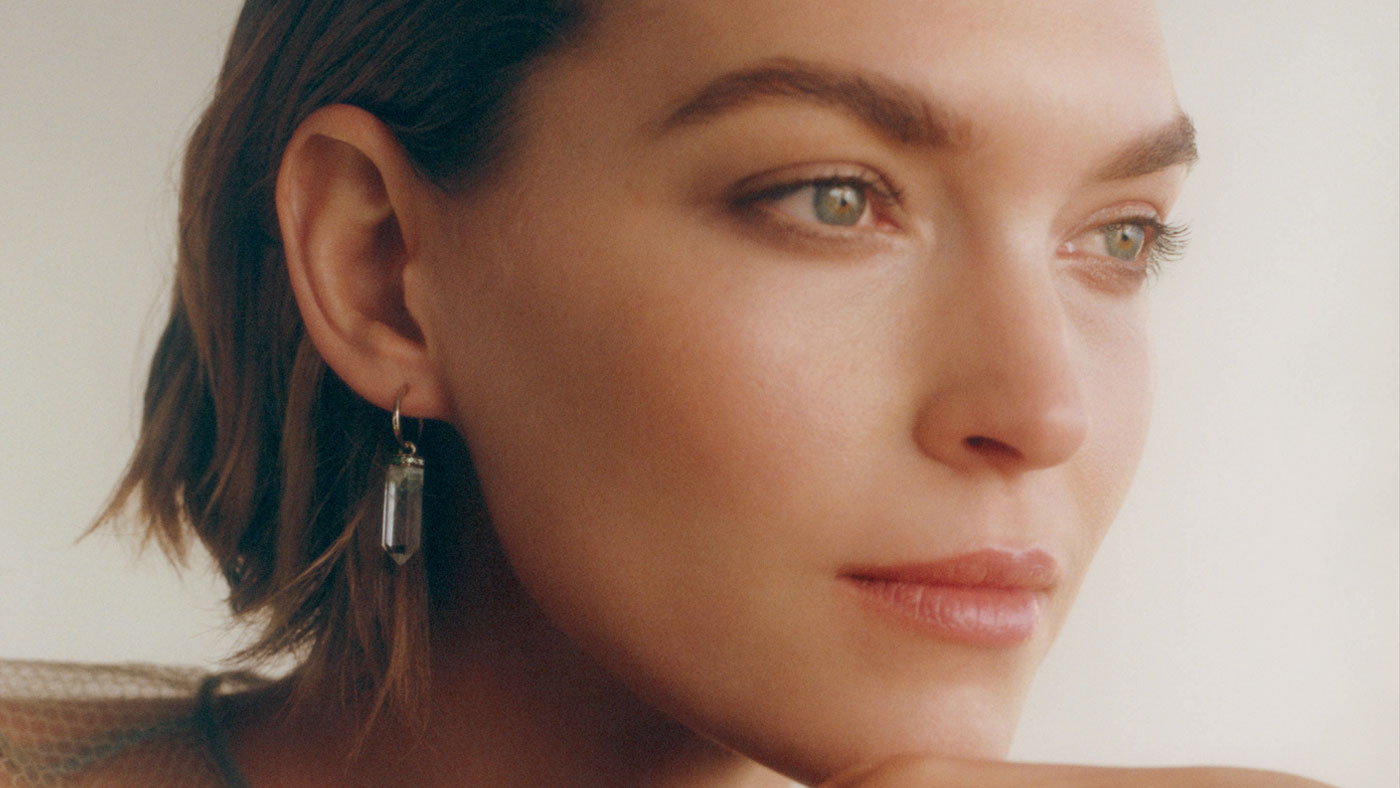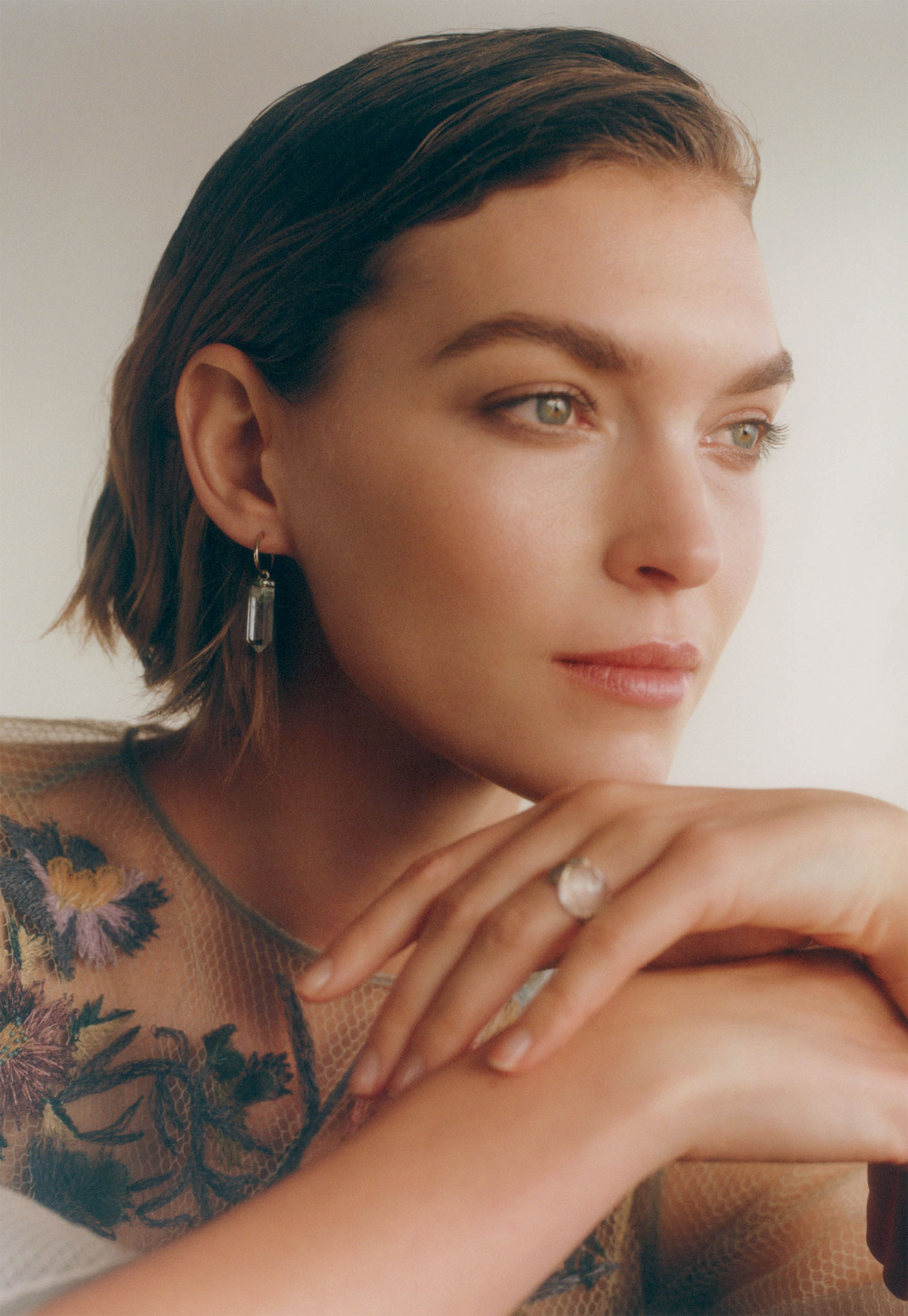Praising Arizona: an afternoon with a mindful model and activist

Model and activist Arizona Muse is on a mission to change attitudes from within the fashion industry and she has some good news: you’re allowed to love fashion if you’re a climate change activist – the two are not mutually exclusive. The supermodel, who has long been flying the flag for sustainability, is well aware of the paradox: taking a hard line against environmentally impactful businesses when you work in an industry that is responsible for more than 1.2 billion tonnes of carbon emissions each year could be regarded contentious. But Arizona doesn’t feel compromised and she certainly has no time for cynics. The British- American model is adamant she’s in the best position to action change.
“My work as a model gives me an access point to an industry that I would not otherwise have,” says the 31-year old beauty, who was born in her namesake state and raised in Santa Fe, New Mexico. “And guess what I am doing when I am on these shoots or in meetings with top brand executives? I chat, chat, chat about environmental issues and activism!” she adds, with a mischievous smile. “I think that can make a difference, because there is every possibility that they will walk away and think, ‘I want to do something and I want to make a difference.’”
Muse has spent the last five years educating herself on climate issues while continuing to dominate high fashion circles as one of the world’s most sought-after models. Since hitting the big time in 2010 when she famously opened and closed Prada’s SS11 show as a relative unknown, Muse has appeared in hundreds of fashion shoots. She has graced the cover of more than 40 Vogue editions – from American Vogue to Vogue Russia – and has fronted campaigns for the likes of Miu Miu, Tiffany & Co, Louis Vuitton, Fendi, Chanel and Chloé. Her image has been captured by fashion’s most acclaimed photographers, including Patrick Demarchelier, Inez and Vinoodh, Alasdair McLellan and Peter Lindbergh. Muse is very much at the top of her game, and therefore she’s absolutely right: if anyone can engineer change, or at least rattle the cages of those in authority, she is in a prime position to do so.
The Week
Escape your echo chamber. Get the facts behind the news, plus analysis from multiple perspectives.

Sign up for The Week's Free Newsletters
From our morning news briefing to a weekly Good News Newsletter, get the best of The Week delivered directly to your inbox.
From our morning news briefing to a weekly Good News Newsletter, get the best of The Week delivered directly to your inbox.

If Muse’s reference to ‘ chatting’ implies a kind of cursory do-goodery, think again. Public speaking and podcasts on environmental dilemmas faced by the fashion industry have become a career focus for her. In addition to this and her modelling gigs – she has also been the face of Estée Lauder since 2011 – Arizona now works as a sustainability consultant, advising fashion companies on how to lower their carbon footprint. She’s an ambassador for philanthropic organisations including Women for Women – a non-profit platform that supports women in war-torn regions – and Synchronicity Earth, a charity that promotes underfunded conservation projects.
Most recently, she became an ambassador for Greenpeace UK and has been helping to raise awareness about the environmental group’s campaign to protect the oceans. There’s plenty more up her sleeve, too, but like a true spokesperson for change, Muse weaves her arguments around the work of others rather than her own accreditations. This hasn’t stopped her ploughing forward – quite literally – with ambitious personal projects, however: this year, she plans to launch a charity for soil regeneration through biodynamic farming. We meet at our shoot location: a top-level hotel suite in central London with floor-to-ceiling windows that offer sweeping views over Mayfair and Westminster. It’s a beautiful blue-sky day, and in this bright environment Muse’s almond-shaped eyes are especially intense, a swirling green gaze that sometimes deepens to blueish-grey depending on the light. It’s easy to see why she’s made so many front covers: her leonine features – those eyes, but also her steeply angled cheekbones and perfect facial symmetry – convey a sense of power, like a modern-day femme fatale.
The model’s adorable one-year-old daughter Cy – her child with her French osteopath husband Boniface Verney-Carron – is with her today. “I’m sorry,” Muse says, apologetically, in smooth transatlantic tones. “I hope it’s not a problem. My nanny isn’t well.” Baby Cy, impeccably dressed in dark green tights, matching leather shoes and a cream floral shirt, immediately makes a beeline for the make-up table, but is promptly scooped up by her doting mother, who has already clocked the hot styling tongs. “We’re not going to touch those, are we?” Muse says, smothering her daughter in kisses.
She also has a ten-year-old son, Nikko, from a previous relationship, so is well practised in the art of juggling a demanding career and motherhood. When Muse was a single mother – she married Verney-Carron in June 2017 – Nikko invariably accompanied her to his fair share of magazine shoots, too. “It’s definitely easier this time round. As I say to my friends, ‘You should have a ten-year-old before you have a baby!’” she laughs. “Because there is such a big age gap, there is no jealousy or friction. He is so much fun for her, and he’s the best entertainer. It’s beautiful to watch, actually.” Muse has spoken at length about how challenging it was to have a baby at a young age. “I worked so hard, and I was very tough on myself. I had an immense amount of fear that everything would be done tomorrow and no one would ever choose me again. There is no stability in modelling, and with a child I certainly felt this volatility. Plus, I was very conflicted. When I was out with my friends, I felt guilty for not being at home with my child, and when I was at home I felt like I was missing out. Now, I can’t think of anything better than being at home with my husband and kids on a Saturday night.”
A free daily email with the biggest news stories of the day – and the best features from TheWeek.com
But now we’re back on the subject of saving the planet – Muse doesn’t veer off-topic for long – and she’s explaining the alarming resource consumption of fast fashion, which she maintains must to be addressed upstream in the supply chain. “It’s shocking how many steps there are on the way to making a garment, and that’s before you even have the fabric,” she says. “The production of raw materials creates environmental damage that impacts everything from our water systems to the soil we cultivate. Organic agriculture reduces the amount of chemicals that are used in the growing process, but better still is regenerative agriculture that laces nutrients back into the soil. Increasing biodiversity is the most important thing we can be doing for our planet right now.” Muse knowns her materials: she sits on the advisory board of The Sustainable Angle – a non- profit association responsible for launching the Future Fabrics Expo. Now in its ninth year, this London-based fair showcases thousands of globally sourced textiles and materials that are sustainably and responsibly produced by traceable suppliers.Of course, we do have to address the elephant in the room: Muse’s own wardrobe and the luxury clothes she models on campaigns and editorial shoots are not always fashioned from sustainable fabrics. Today for example, the model is wearing sustainably made light-blue jeans by Reformation, with a not-so-ethically produced bib-collared black jumper by Temperley, and chunky tweed biker boots by Tory Burch.
“Well, here’s the thing...” she begins, with an expression that says, ‘I get this a lot.’ “I would love to walk into a store and know that whatever I buy will have a positive social and environmental impact on our planet. But, right now, not enough is available, so we need to fight for that. And yes, a lot of my clothes are not sustainable, but that doesn’t mean I should get rid of them – you have them, so wear them and get proper use out of them. But when I buy something new now, it’s from a brand that is either sustainable or making greater steps to towards a greener, more ethical business culture. And certainly I would never again buy anything synthetic. It’s unfair that sustainability is accessible to people who have a comfortable financial situation, but I think that if you are in that advantageous financial position, you have a responsibility to support that business effort.”
As for the shoots and campaigns, Muse supports luxury brands that are making progress in reshaping their supply chain and embracing renewable options in their factories. For our shoot, she wears Givenchy and Dior, two brands endorsed by Positive Luxury, a non-profit initiative that recognises and supports businesses that are reaching high standards of environmental performance; this brand community also includes Loewe, Louis Vuitton and TAG Heuer, among others. Muse has been named one of the judges at the organisation’s inaugural awards, staged on February 25, which commends sustainability and innovation within the luxury industry.
She’s certainly a busy lady. But does all this research ever get her down? “The more I discover, the better I feel!” she says, smiling, as she bounces little Cy on her knee. “I don’t suffer from climate depression or climate anxiety – not yet, anyway! In fact, I feel lucky to be alive right now, because I don’t feel powerless. I feel I can do something about it. I’m a great believer in the human will. In the face of climate change, we will do our most efficient work to change the way our society functions.”
It’s a happy note to end on, and one which makes me smile later that evening when I listen to Donald Trump’s speech at the World Economic Forum in Davos. As the president decries climate “prophets of doom”, I think back to Arizona Muse, her eyes sparkling in the sunlight, and the positive energy that she radiates. I’ll take optimism and activism over navel- gazing and name-calling any day.


